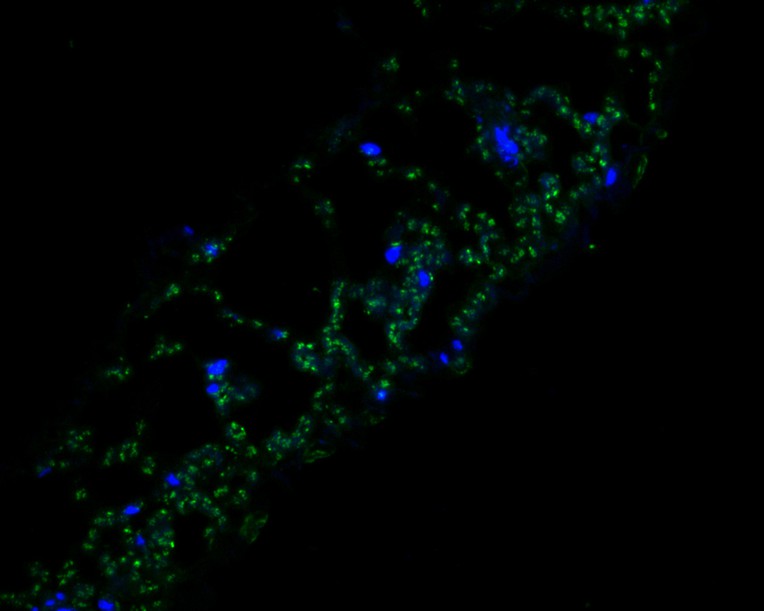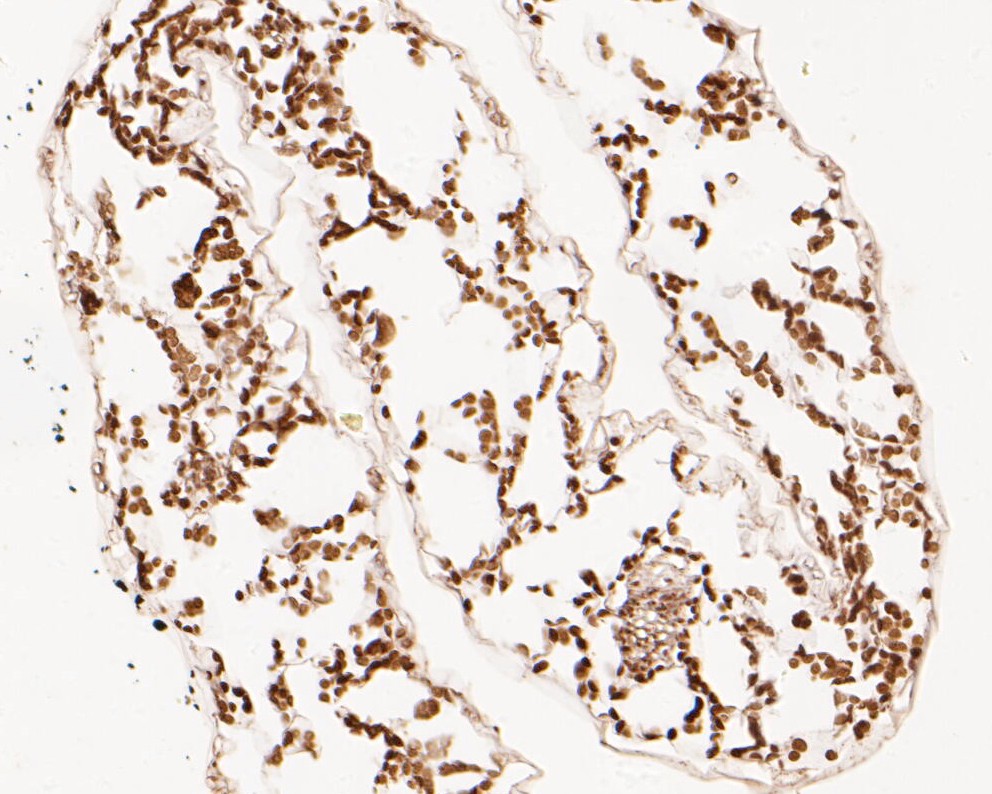-
Product Name
Anti-FAB1A antibody
- Documents
-
Description
Rabbit polyclonal antibody to FAB1A
-
Tested applications
IF, IHC-P
-
Species reactivity
Arabidopsis thaliana
-
Alternative names
F4I10.170 antibody; F4I10_170 antibody; FORMS APLOID AND BINUCLEATE CELLS 1A antibody
-
Isotype
Rabbit IgG
-
Preparation
This antigen of this antibody was synthetic peptide within arabidopsis thaliana fab1a aa 100-200 / 1757.
-
Clonality
Polyclonal
-
Formulation
Liquid, 1*TBS (pH7.4), 1%BSA, 50%Glycerol. Preservative: 0.05% Sodium Azide.
-
Storage instructions
Store at +4℃ after thawing. Aliquot store at -20℃. Avoid repeated freeze / thaw cycles.
-
Applications
IF:1:50-1:100
IHC-P:1:50-1:200
-
Validations

Fig1:; Immunofluorescence staining of paraffin- embedded A. thaliana using anti-FAB1A rabbit polyclonal antibody.The section was pre-treated using heat mediated antigen retrieval with Tris-EDTA buffer (pH 9.0) for 20 minutes. The tissues were blocked in 10% negative goat serum for 1 hour at room temperature, washed with PBS, and then probed with 176619# at 1/100 dilution for 10 hours at 4℃ and detected using Alexa Fluor® 488 conjugate-Goat anti-Rabbit IgG (H+L) Secondary Antibody at a dilution of 1:500 for 1 hour at room temperature.

Fig2:; Immunohistochemical analysis of paraffin-embedded A. thaliana tissue using anti-FAB1A antibody. The section was pre-treated using heat mediated antigen retrieval with Tris-EDTA buffer (pH 9.0) for 20 minutes.The tissues were blocked in 5% BSA for 30 minutes at room temperature, washed with ddH; 2; O and PBS, and then probed with the primary antibody ( 1/50) for 30 minutes at room temperature. The detection was performed using an HRP conjugated compact polymer system. DAB was used as the chromogen. Tissues were counterstained with hematoxylin and mounted with DPX.
- Background
-
References
- Hirano T. et. al. Loss-of-function and gain-of-function mutations in FAB1A/B impair endomembrane homeostasis, conferring pleiotropic developmental abnormalities in Arabidopsis. Plant Physiol. 155:797-807(2011).
- Hirano T. et. al. Arabidopsis FAB1A/B is possibly involved in the recycling of auxin transporters. Plant Signal. Behav. 6:583-585(2011).
Related Products / Services
Please note: All products are "FOR RESEARCH USE ONLY AND ARE NOT INTENDED FOR DIAGNOSTIC OR THERAPEUTIC USE"
